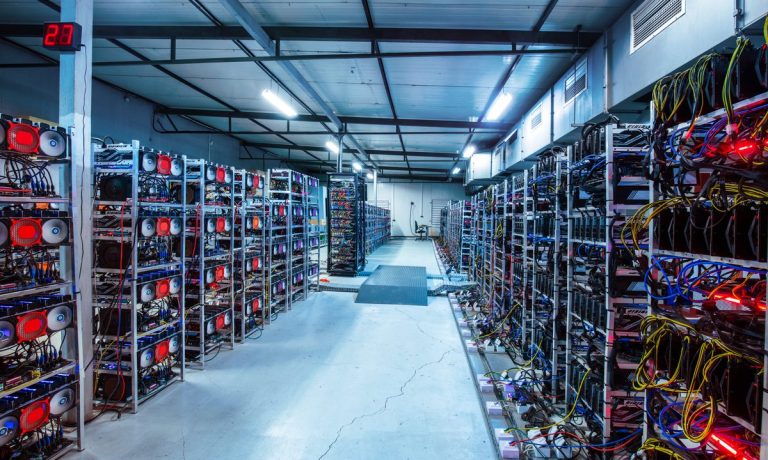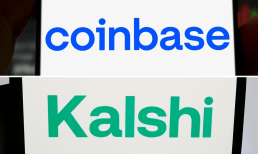Bitcoin, blockchain and cryptocurrency are words that most people have at least heard of since the industry exploded into the mainstream public consciousness in 2021.
Over the course of this series of articles, we’ll be delving into the basics of the industry, providing an introduction to crypto that will give you a solid grounding in the technology and a lexicon for its terminology — it may seem that cryptographers should never be allowed to name anything the public will eventually need to know, but you’ll understand what people are talking about before deciding if you want to learn more.
What we are not going to do is talk about regulation, finance or investing — you’ll find that elsewhere on PYMNTS.
See the series:
PYMNTS Crypto Basics Series: What’s a Blockchain and How Does It Work?
PYMNTS Crypto Basics Series: What’s a Consensus Mechanism and Why Is It Destroying the Planet?
Advertisement: Scroll to Continue
PYMNTS Crypto Basics Series: Is Bitcoin Really Anonymous and How Can Law Enforcement Track It?
PYMNTS Crypto Basics Series: What’s a Permissioned Blockchain and How Does Centralized Decentralization Work?
PYMNTS Crypto Basics Series: How to Lose Your Crypto Without Being Hacked
If you’ve heard anything about bitcoin beyond that it exists, you’ve probably heard of mining bitcoin as a way to get rich — which isn’t entirely wrong, at least in theory.
Mining is the way new bitcoins are created and the way new information is written on the blockchain, but crypto mining is more than that. It’s an industry whose economics dominate bitcoin and many of cryptocurrencies that came after it — most notably the main payments-focused ones, such as litecoin and bitcoin cash.
In many ways, mining and miners control the usability of bitcoin and its competitors as effective currency replacements. However, we’re going to just focus on bitcoin.
We’ve covered the technical side of mining, also known as “proof-of-work,” in an earlier piece in this series about consensus mechanisms. We’ll recap that, but you can go into more detail in the link above.
This article is about the business of bitcoin. As you’ll see, it runs into some of the same issues that affect other parts of the payments business — most notably, how the size of transaction fees influences whether people pay for things with bitcoin.
Read more: PYMNTS Blockchain Series: Litecoin Is the ‘Silver’ to Bitcoin’s ‘Gold’
The Technical Stuff
Bitcoin mining works by using an algorithm called “proof-of-work” (PoW) to add new blocks of information to the blockchain.
To make sure the transaction information added to the Bitcoin blockchain is a correct record of the transaction, Bitcoin relies on randomly choosing miners to gather transactions, verify them and create the new block. The winning miner is chosen by creating a very complex math puzzle that can only be solved by guessing.
To secure the process, Bitcoin incentivizes as many people as possible to participate by rewarding miners with transaction fees and a batch of new bitcoins that are minted when a new block is added — currently 6.25, worth about $250,000 at a $40,000 bitcoin price.
The second half of the PoW security process is based on the fact that Bitcoin is a distributed ledger, meaning many computers are running a full version of the blockchain, which is updated in real time. These are called nodes, and Bitcoin presently has about 15,000. Anyone can run one, but while you do not need to be a miner to run a node, you need to run a node to be a miner.
The consensus part is that all of these nodes have to agree that the information on the block is accurate — so the more nodes, the more secure it is. If more than half don’t agree, the block is rejected and the block reward of new bitcoins is forfeited.
Related: PYMNTS Blockchain Series: What Is Bitcoin Cash? The No. 2 Payments-Focused Crypto Goes Its Own Way
Unsafe Monopolies
The first problem with the business plan created by Bitcoin’s pseudonymous author, Satoshi Nakamoto, is the rewards weren’t capped effectively enough.
As a result, when the value of bitcoins climbed from a few dollars to a few hundred dollars — then thousands and now tens of thousands — capitalism struck, and investing in more and more powerful mining computers began to make economic sense.
An arms race of sorts ensued, and now there are two ways of having a real shot at winning block rewards. The first is by creating mining companies that can invest in thousands of highly-specialized and expensive computers that can do only one thing — mine bitcoin — and quickly become obsolete as more powerful machines are developed.
Under this business model, mining is now a business that requires regular six- or seven-figure investments in computers, and the ability to pay for the enormous amount of power those mining computers require.
The second way to mine is open to individuals with normal but high-end computers designed for gamers. However, they have to join large mining pools and split the rewards many ways.
Which leads — at least in theory — to a big security problem: Just four groups control account for almost 60% of all bitcoin mining, and 11 control more than 99%. So, is Bitcoin’s blockchain really all that distributed?
So what? Well, blockchains have an Achilles’ heel: 51% attacks. That means if someone controls more than half of a blockchain’s mining power, they can take control of it and double-spend new transactions. Right now, that means four people could seize control of an asset worth $750 billion.
See also: The 51% Attack: Crypto’s Double-Spending Achilles Heel
Needless to say, there are economic disincentives — notably, the price of bitcoin would collapse. But until China outlawed bitcoin miners last June, most of all mining was taking place China, leading some industry insiders to argue that the totalitarian government could take control of Bitcoin if it wanted to.
Why they’d want to is an entirely different, and far from obvious, question, but it’s still a hole in the Bitcoin business plan.
So, given that the goal of Bitcoin was to scale up to be a tool for peer-to-peer payments that would bypass banks and credit cards, why didn’t Satoshi Nakamoto foresee this problem?
Well, they did. But the solution, called halving, was not equal to the task — every 210,000 blocks, the reward is cut in half.
When Bitcoin started in 2009, the block reward was 50 bitcoins. Now, it’s down to 6.25, but the value of a bitcoin is so high that about $250,000 is given away every 10 minutes.
What the Market Will Bear
The second problem the business of Bitcoin faces is fairly obvious, and has effectively taken Bitcoin out of the race to be a major business-to-consumer (B2C) payments channel:
That is transaction pricing, as transaction fees are important in the long-term scheme of Bitcoin. To keep bitcoins from being inflationary, there is a hard cap of 21 million, which will be reached in 2040. At that point, they will be the only reward miners will receive.
The problem is that transaction fees are already far too high — several dollars, at least — for bitcoin to be a serious payments option for small purchases.
Worse, Bitcoin’s scalability is limited to its current five to seven transactions per second.




